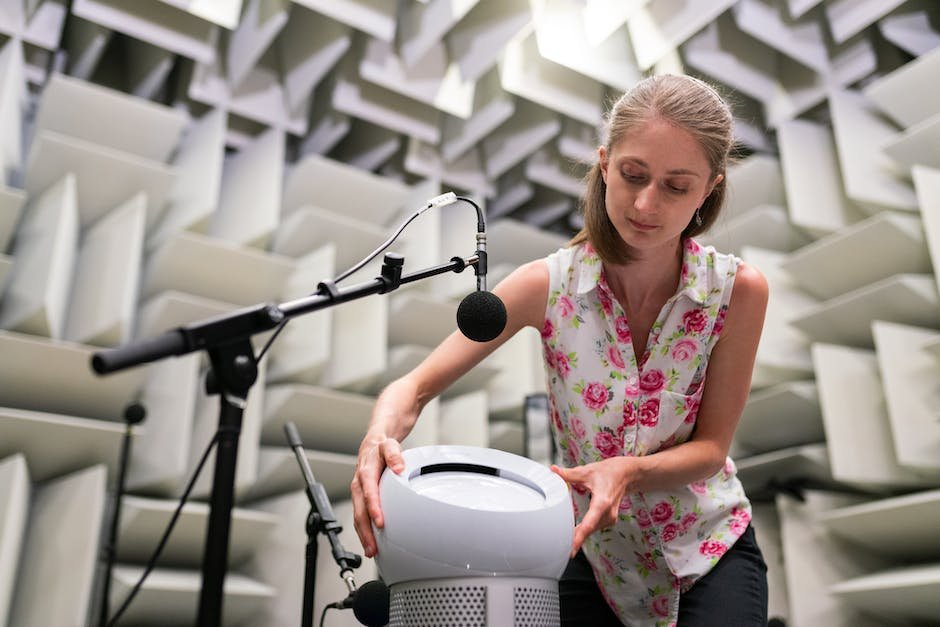
Applied Behavior Analysis (ABA) is a therapy technique that aims to improve specific behaviors and skills, especially for individuals with disorders such as autism. In the journey to better understand ABA therapy, its purpose and objectives lie at the forefront. Comprehending the therapy’s fundamental tenets provides a roadmap for not only appreciating its value but also knowing how to measure progress effectively. Knowledge on how to graph and measure improvements in behaviors, through data recording, observation, and various assessment tools, becomes crucial in quantifying the treatment success of the therapy. Furthermore, understanding that behavior changes, not just improvements, can indicate therapeutic progress offers a more in-depth window into the intricate dynamics of ABA therapy.
Understanding ABA Therapy
Demystifying ABA Therapy: A Deep Dive into its Goals and Benefits.
Have you ever heard of Applied Behavior Analysis (ABA) therapy? If you have a child with Autism Spectrum Disorder (ASD) or another developmental disorder, chances are you’ve come across this term. But what exactly is ABA therapy, and how can it benefit your family? Let’s shed some light on this incredibly important tool that parents may find invaluable in nurturing their exceptional children.
ABA therapy, in simple terms, is a scientific approach to understanding and changing behavior. Rooted in the principles of behaviorism, this therapy focuses on how behavior works, how it is affected by the surrounding environment, and what we can do to help change the behavior to more positive and socially significant ones. Is it sounding a bit heavy still? Stick with us, and it will all start making sense.
At the heart of ABA therapy is the goal to enhance the quality of life for individuals and their families by targeting socially significant behaviors. In reality, these behaviors may encompass a wide range of skills – from learning how to interact with peers, to reducing harmful actions, to mastering daily tasks like brushing teeth or even shopping for groceries. The sky’s the limit, really.
One of the fantastic aspects of ABA therapy is its customization. Every plan is individualized and initially based on a thorough assessment of the child’s current abilities and behavioral challenges. Weekly sessions then typically take place either in a clinic, at school, or at home, providing consistency and continuity which is critical to success.
If you’re wondering what happens during these sessions, it essentially involves teaching new skills through a system of rewards and consequences. Practitioners find ways to create a motivational environment that encourages kids to learn and maintain positive behaviors while discouraging negative ones. It’s all about nurturing an environment that promotes learning, growth, and of course, a lot of self-confidence.
One of the most appealing benefits of ABA therapy is the fact that it allows parents to take a hands-on approach in their child’s progress. Parents have the opportunity to learn the strategies and employ them in daily routines. This not only aids in the child’s development but also strengthens the parent-child bond and reinforces the learning in various environments.
All this said, it’s vital to remember that every child is unique, and what works for one may not work for another. ABA therapy is no magic wand, but it has shown significant results across a multitude of research. If you’re considering it for your resilient little one, it’s advisable to consult a certified ABA therapist or a trusted pediatrician to chart the most suitable course.
Parenting a child with developmental disorders can often feel like navigating uncharted territory. There may be bumps along the journey, but with tools like ABA therapy and a supportive community around, it’s possible to shape behaviors and encourage independence. After all, every step forward, no matter how small, is a victory worth celebrating in this beautiful journey of parenting.

Measuring Progress in ABA Therapy
Measuring Progress in ABA Therapy: A Guide for Parents
Parents love to see their children thrive and when a child requires additional help due to their unique developmental needs, progress indicators become even more critical. Applied Behavioral Analysis (ABA) therapy has proved to be a valuable pillar of support for many families, enabling their unique children to build vital skills and improved behavior. However, a common question that often surfaces revolves around evaluating progress made during this therapy. So, let’s delve into how progress in ABA therapy can be measured.
The principal method for measuring progress in ABA therapy is through a detailed behavior assessment. A certified ABA therapist conducts these evaluations initially and normally repeated every six months or annually. They evaluate both the frequency and the intensity of the specific behaviors that the therapy focuses on modifying. Regular monitoring provides a clear picture of how the child is progressing and any necessary changes that need to be made to their plan.
To further elaborate, data collection is a central process used in ABA therapy. These quantitative parameters help therapists to make informed decisions about a child’s treatment and track progress over time. This means recording every instance of the target behavior during specified observation times, not only during therapy sessions, but also at home or in school. The more data collected, the better insight therapists have about the child’s behavior.
A cornerstone of ABA therapy lies in setting clear, measurable goals. Examples might include reducing tantrums, increasing verbal communication, or improving social skills. By breaking down these larger goals into smaller, manageable steps, progress can be examined at a granular level. As the child meets each small goal, it’s not only a sign of progress but also a motivation for the child to keep moving forward.
Another way to measure progress in ABA therapy is through generalization. This involves the child’s ability to apply skills learned in therapy to new and untaught situations. For instance, if the child learns not to interrupt when their therapist is speaking, the same skill should be exhibited with their teacher at school. Generalization is an excellent indicator of the therapy’s effectiveness and progress.
A big part of any therapy is the feedback from the people closest to the child, particularly parents and teachers. Consistent communication between therapists and these key figures are crucial in measuring true progress. Teachers can offer insights related to academics and peer interactions, while parents can share milestones or challenges observed at home. Their input provides an overall understanding of the child’s progress, cutting across diverse environments.
Remember, progress is not always linear. There could be setbacks, but they should not be seen as failures. Instead, they act as indicators for potential plan modifications. What matters most is that the child is learning and growing at their own pace, with ABA therapy providing the foundational support they need.
In conclusion, measuring progress in ABA therapy is a multi-faceted process, involving meticulous data collection, the measurement of pre-set goals, feedback from parents and teachers, and monitoring generalization. Each child’s journey will be as unique as they are, but the beauty of ABA therapy lies in its flexibility to adapt to each child’s distinctive needs. And remember, you are not alone in this journey – a supportive community awaits you, providing the much-needed backup you might need. Happy Parenting!

Interpreting Behavioral Changes
Turning to the interpretation of changes in behavior within the context of ABA therapy, it’s crucial to mention that data-driven observations play a vital role. Changes in behavior are firmly rooted in the foundational principles of Applied Behavior Analysis (ABA). Essentially, these changes stem from an understanding of why behaviors occur, as well as implementing techniques that encourage desirable behaviors and reduce those that may hinder a child’s development.
Each child is unique with an individual set of behaviors that vary in intensity, frequency, and context. This uniqueness means that changes need to be evaluated in an individualized way. Hence, therapy sessions should be designed to create an environment with the right mix of stimuli to provoke behavioral responses, then measure, interpret, and modify these responses effectively.
How these changes in behavior are interpreted heavily relies on the details collected by ABA therapists. Data collection illuminates the scope of a child’s behaviors, offers an in-depth understanding of providing a suitable response, and allows a systematic review of the progress. A behavior that increases in frequency may be a sign that the ABA technique employed is working. Likewise, a decrease in negative behaviors signifies progress as well.
While interpreting changes, it’s important to know that not all changes mean progress. Sometimes, what may appear to be regression can also be an integral part of the child’s developmental journey. Unfamiliar situations or new environments can trigger stressful responses. Being patient and understanding this aspect is essential in recognizing that progress may not be straightforward or linear.
ABA therapy is characterized by its flexibility and customization. When a certain approach does not facilitate the desired behavioral changes, therapists will adjust the intervention strategies to suit the child’s needs better. This continuous cycle of behavior monitoring, data collection, interpretation, and adaptation is what contributes to the effectiveness of ABA therapy.
In this journey, communication between therapists, parents, and teachers is key. Such communication creates a consistent environment for the child, enhancing the ability to interpret changes in behavior. Constructive feedback plays a significant part in shaping and refining ABA techniques.
Joining a community of parents who are going through a similar journey could be helpful. Sharing experiences, learning from others, and gaining insights make the process less daunting. Ultimately, everyone involved wants to ensure that the child leads the best possible life they can. By examining behaviors in the context of ABA therapy, it becomes feasible to understand the child better and mould an environment that promotes growth, learning, and happiness.
Wrapping up, it’s undoubtedly a journey that requires dedication and a rich understanding of ABA therapy. But know that it’s worthwhile when seeing your child develop into the very best version of themselves. Combine that with a loving and welcoming community, the road ahead becomes a little less intimidating and a lot more hopeful. Remember, in this quest of molding behaviors, you are not alone.
Progress is how we get closer to our goals, observing, interpreting and reacting to our child’s behavioral changes lays a foundation for a brighter, happier future for them. Here’s to nurturing, growing and opening a world of potential for every child, one behavior at a time!

Critical, however, to navigating the waters of ABA therapy is the ability to trust the process. The journey may often bring about various behavioral changes that might not instantly signify improvement. However, seeing such changes in the right context, as part of a broader therapeutic process, can be a powerful motivator. Understanding ABA therapy, accurately measuring its progress and correctly interpreting behavioral changes is not just a science, but an art. Mastering this empowers one to not only provide constructive support but also celebrate each step towards the therapy’s overall objectives – improving specific behaviors and skills for individuals undergoing ABA therapy.




